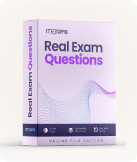ECCouncil 312-50 - Ethical Hacking and Countermeasures Exam
Page: 1 / 123
Total 614 questions
Question #1 (Topic: Background)
Which of the following is a hardware requirement that either an IDS/IPS system or a proxy server must have in order to properly function?
A. Fast processor to help with network traffic analysis
B. They must be dual-homed
C. Similar RAM requirements
D. Fast network interface cards
Answer: B
Question #2 (Topic: Background)
Which of the following is an application that requires a host application for replication?
A. Micro
B. Worm
C. Trojan
D. Virus
Answer: D
Question #3 (Topic: Background)
A large company intends to use Blackberry for corporate mobile phones and a security analyst is assigned to evaluate the possible threats. The analyst will use
the Blackjacking attack method to demonstrate how an attacker could circumvent perimeter defenses and gain access to the corporate network. What tool should
the analyst use to perform a Blackjacking attack?
the Blackjacking attack method to demonstrate how an attacker could circumvent perimeter defenses and gain access to the corporate network. What tool should
the analyst use to perform a Blackjacking attack?
A. Paros Proxy
B. BBProxy
C. BBCrack
D. Blooover
Answer: B
Question #4 (Topic: Background)
Which of the following can the administrator do to verify that a tape backup can be recovered in its entirety?
A. Restore a random file.
B. Perform a full restore.
C. Read the first 512 bytes of the tape.
D. Read the last 512 bytes of the tape.
Answer: B
Question #5 (Topic: Background)
Which of the following describes the characteristics of a Boot Sector Virus?
A. Moves the MBR to another location on the RAM and copies itself to the original location of the MBR
B. Moves the MBR to another location on the hard disk and copies itself to the original location of the MBR
C. Modifies directory table entries so that directory entries point to the virus code instead of the actual program
D. Overwrites the original MBR and only executes the new virus code
Answer: B
